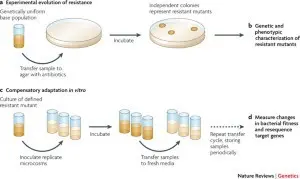Contrary to popular belief, antibiotic-resistant bacteria can also be stronger and more dangerous, according to Science Translational Medicine.
Since antibiotic-resistant bacteria multiply more slowly in laboratory conditions than ordinary bacteria, until recently scientists believed that resistance to antibiotics came at a price – with the deterioration of other life possibilities. However, new research indicates that this is not the case. How else can you explain the worldwide prevalence of resistant strains?
David Skurnik and his colleagues from Harvard Medical School in Boston (Massachusetts, USA) conducted studies on mice exposed to various strains of the Pseudomonas aeruginosa bacteria. This bacterium causes various types of infections, especially in immunocompromised people.
Some of the strains had antibiotic resistance mutations. As it turned out, these strains better colonized the lungs of mice and it was easier for them to survive in this environment. Also, drug-resistant cholera and Acinetobacter baumannii that cause nosocomial infections infected mice or rabbits more easily than representatives of strains sensitive to antibiotics.
Efforts to prevent drug resistance have so far focused on reducing the abuse of antibiotics. Experts assumed that this would give non-resistant – implicitly stronger – bacteria a chance to displace weaker, supposedly antibiotic-resistant bacteria from the environment.
Skurnik cautions that if the resistant bacteria are stronger, restricting the use of antibiotics will not reduce the existing risk. In his opinion, it is necessary to focus on developing new methods of fighting bacteria. Instead of drugs that simply kill microbes, therapies that use the action of the immune system, such as antibodies and vaccines, may be more effective.










